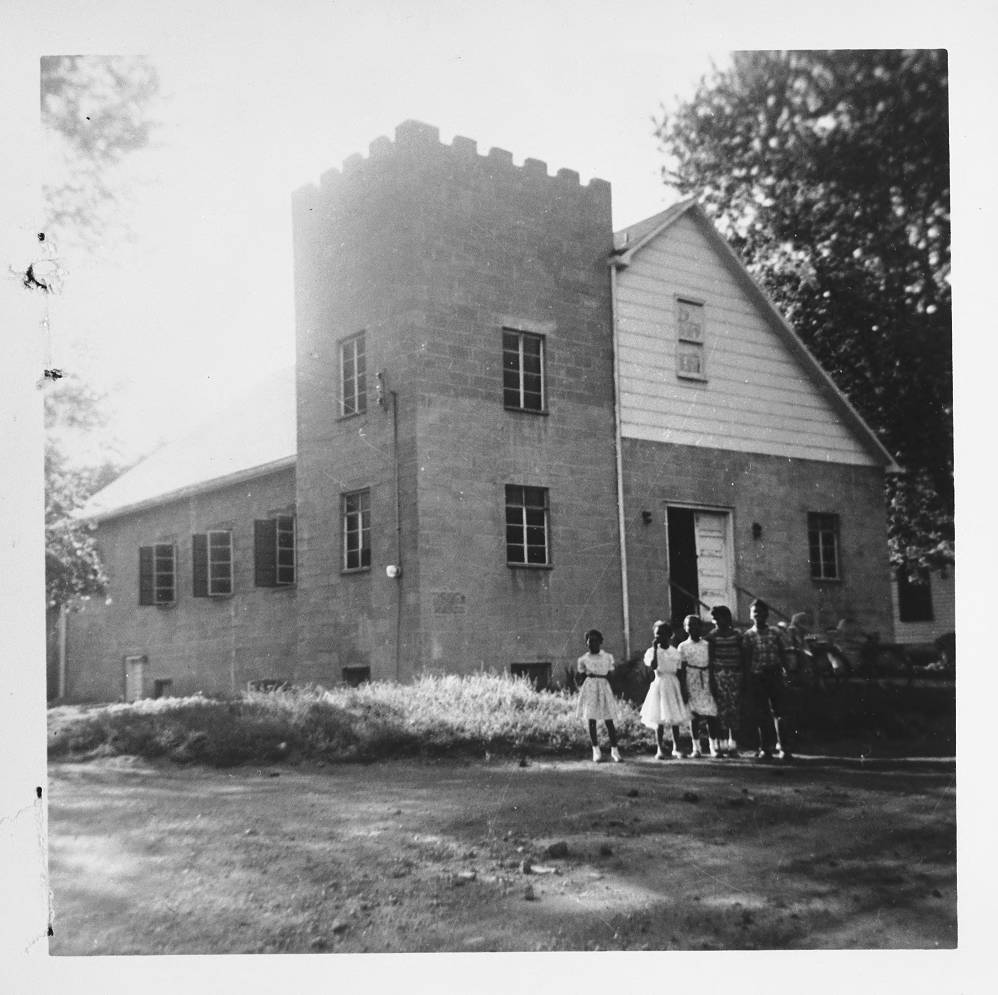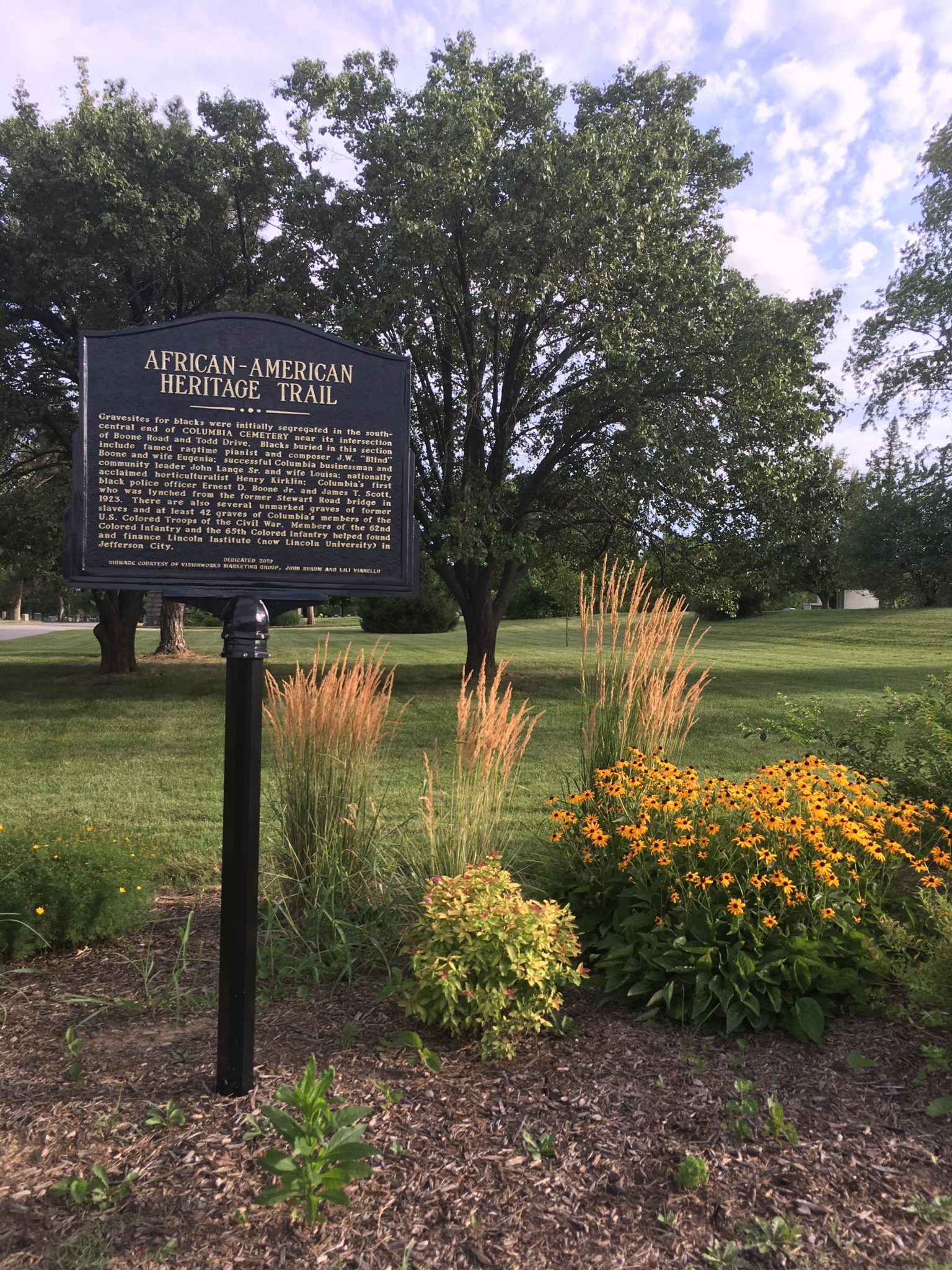Learn about a local myth or legend
Rather than immerse myself in mythic, far-off lands, I preferred to keep my Summer Reading challenge close to home. Activities from this year’s program motivated me to explore the rich Black history in mid-Missouri. First embarking on the African-American Heritage Trail, I learned about local legends like Annie Fisher, the nationally-renowned “Biscuit Queen,” music venues like McKinney Hall that hosted jazz icons and the Sharp End Black business district, which was razed for urban renewal in the mid-twentieth century. Here you’ll find suggestions for completing the entire challenge while educating yourself about the fascinating heritage of Black folks in our city and state.

1) Visit a park or garden – Columbia’s new African-American Heritage Trail displays a score of plaques along its 2-mile route which acknowledge the town’s segregated past. These sites identify a few structures still standing as well as many long-demolished, highlighting the homes of famous community members, Black-owned or friendly businesses, churches and other significant places just blocks away from the library.
2) Read about a myth, legend or fable – Browse Rudi Keller’s special edition from the Columbia Tribune which explores the legendary, half-century history of Sharp End, Columbia’s once thriving Black business district on Walnut Street. It’s important to note that many Black-owned businesses existed outside this block as well.
3) Read a biography – Also included on the trail is J. W. Boone’s historic home (built c. 1890). Read more about this groundbreaking ragtime musician from the biography: “Blind Boone: Missouri’s Ragtime Pioneer.” His and others’ stories are also compiled in “African Americans in Mid-Missouri: From Pioneers to Ragtimers.”
4) Learn about a local myth or legend – Famous for her “beaten” biscuits, Annie Fisher amassed quite the fortune from her popular hospitality businesses in the early twentieth century. Read more about Mrs. Fisher here and visit her plaque on the corner of Park and 7th Street. Michael Twitty’s “The Cooking Gene” includes a historical recipe for making these flaky pastries.
“The dough should be pounded with a hammer, solid rolling pin, mallet, or the back of an ax for 25 to 35 minutes, until the dough appears smooth and blisters.”

5) Listen to a storytelling podcast – “Intersection” from KBIA released “Remembering Sharp End – A Conversation With Sehon Williams” where this long-time resident reflects on growing up in segregated Columbia. A video of Mr. Williams’ full interview is available from the State Historical Society.
6) Download an ebook or audiobook – “The Color of Law: A Forgotten History Of How Our Government Segregated America” will give you a frame for understanding the systemic racism inherent in Columbia’s property patterns and urban renewal programs, which demolished many of the sites now remembered by the African-American Heritage Trail.
7) Watch a mythic film on DVD, Hoopla or Kanopy – “The Pruitt-Igoe Myth” takes a look at the promises and challenges of high-rise public housing in St. Louis, contextualizing the demise of the infamous Pruitt-Igoe housing projects. This documentary is available for checkout on DVD or streaming through Kanopy.
8) Read a book with “story” in the title – Gladys Caines Coggswell’s “Stories From the Heart: Missouri’s African American Heritage” compiles folklore and childhood memories from Black folks across the state. Her book stresses the importance of oral history and storytelling in sharing this culture.
9) Read a book suggested by a blog post – My recommendations for further reading on the topic:
- Douglas Hunt’s “Black and White Justice in Little Dixie” and Patricia Roberts’ “A Lynching in Little Dixie” both discuss the 1923 lynching of James T. Scott, who is a somberly recognized on the African-American Heritage Trail.
- Vivian Gibson’s memoir “The Last Children of Mill Creek” documents her experience of displacement from a once close-knit community within St. Louis.
- Gary Kremer‘s “Race and Meaning: The African American Experience in Missouri” examines historic Black communities across the state.
My takeaway from this project is about memory and community; we all must acknowledge that Columbia was (and is) not immune from racial injustice, and that Black Columbians have resisted in part through placemaking. May we all reflect on how our town came to look the way it does today and how we can create a more equitable society together.


